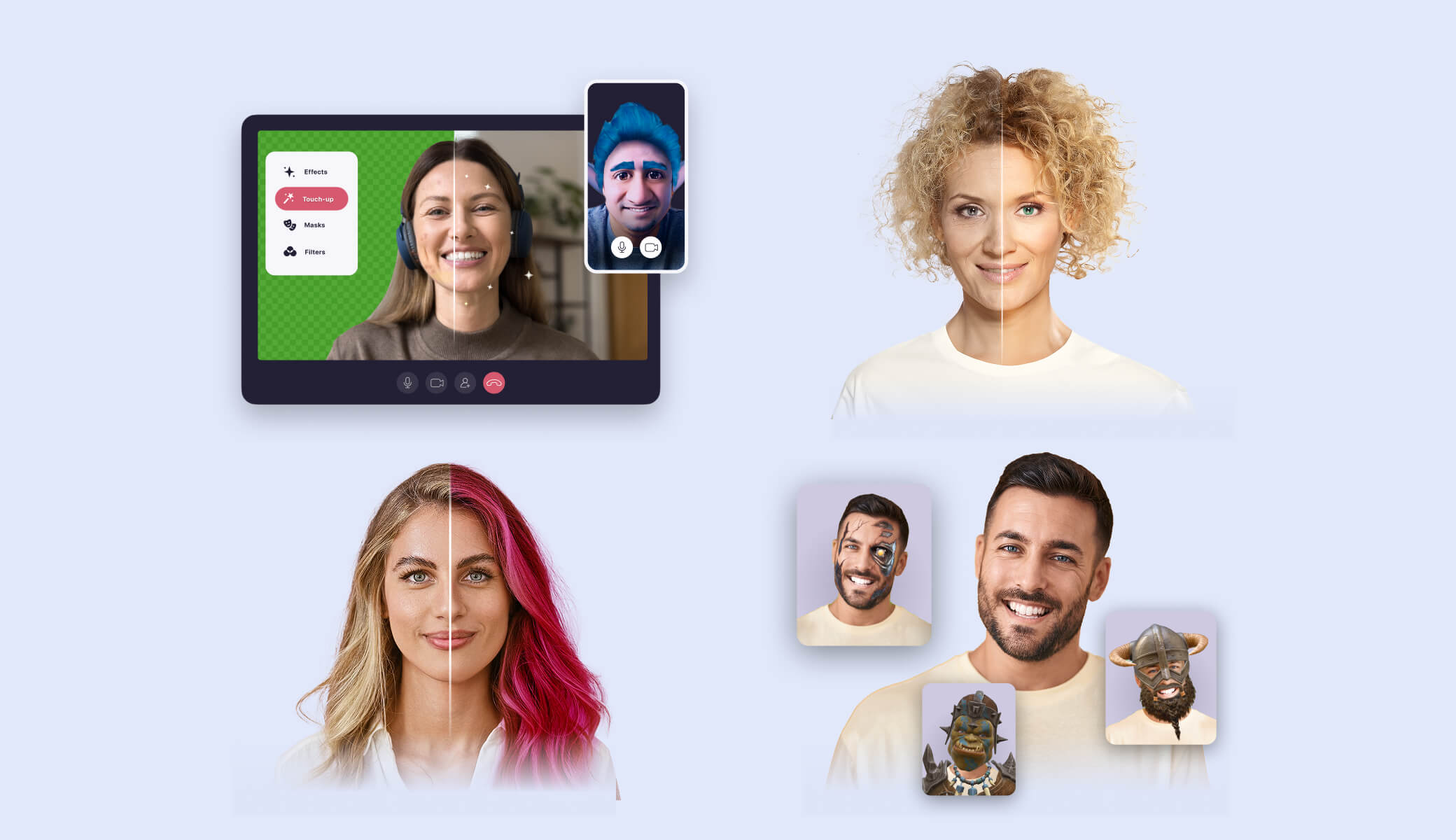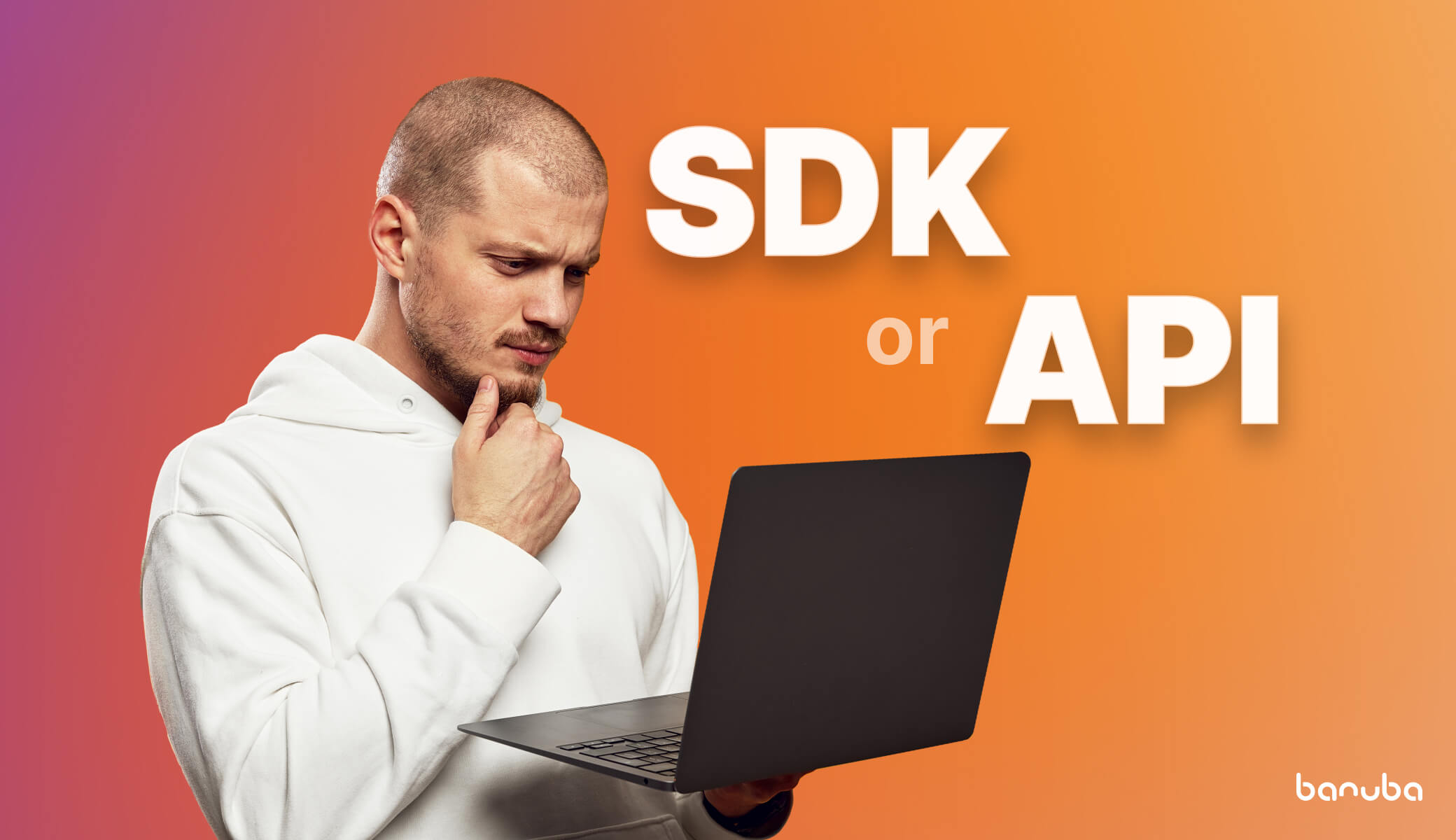What Are AR Stickers and How They Work
AR stickers are simple graphical objects that users can add to their photos and videos, mostly to the face. Like filters, they are based on the same face recognition and landmark tracking technology. However, from the design standpoint, AR stickers are less sophisticated and far easier to create.
Cute ears, cat’s whiskers, and noses are all examples of basic objects that the camera can stick to the user’s face.
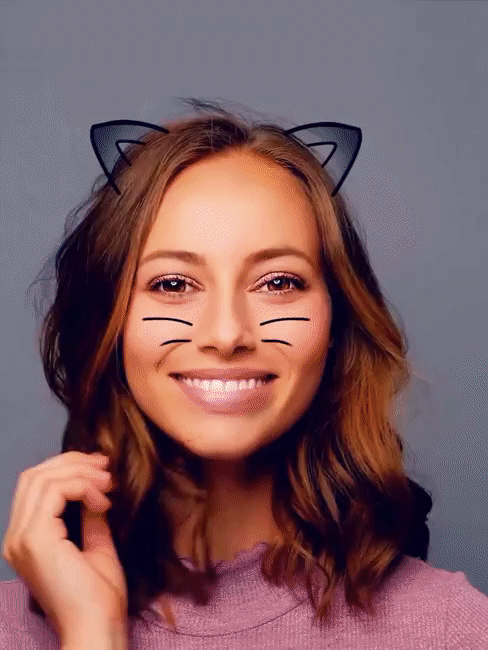 AR SDK feature demo: 3D AR stickers
AR SDK feature demo: 3D AR stickers
Despite their simplicity, AR stickers are immensely popular, especially in the Asian mobile segment in social media, video content-based platforms, messengers, and video calls.
How to Make AR Stickers with Face Filter SDK
Our Face AR SDK enables developers to add facial stickers and 3D filters to communication apps with fast performance and realistic rendering. It’s cross-platform with native iOS and Android, hybrid React Native, Flutter, Unity, and Web AR support.
Along with the SDK, our Asset Store includes production-ready virtual lenses, filters, and 2D and 3D stickers. You can use our SDK to enhance the user experience in video calling, live streaming, and video conferencing apps.

3D AR Stickers vs Face Filters: Key Differences
AR stickers often resemble hand drawings. Their idea is to let users add cuteness and a bit of fun to their photos or video communication. Unlike filters, AR stickers give a tweak to the face rather than transform it completely. From a developer's perspective, they are a safe choice for any camera app.
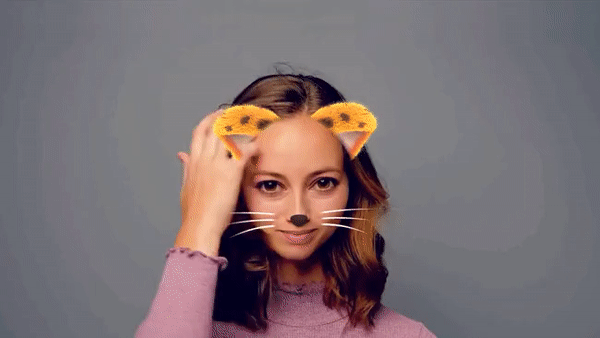 AR SDK: Facial sticker example
AR SDK: Facial sticker example
Face filters are more complex and now become a form of art. They combine richer graphics, morphing, animation, physical-based rendering, etc. Users can literally turn into someone else, interact with AR objects in the camera like in face filter games or virtually try on items like they are real.
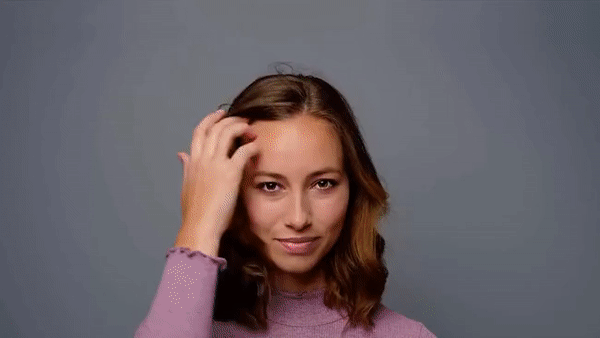 AR SDK: Video face filter example
AR SDK: Video face filter example
Facial Stickers vs Filters: What's Your Choice
Stickers and filters are the same AR content, and one cannot overestimate their importance when developing a face filter app.
If your content rocks, it engages users, makes them stick, and inspires them to generate and share new content. If it's not? The best-case scenario is that users will ignore it, and your investments in Face AR functionality are wasted. In the worst case, they will leave your app with negative reviews because of the poor content.
In fact, providing high-quality AR content is one of the foremost things you can do to attract and retain users.

But how to understand what content users will like? Here are the advantages of both.
AR stickers
- Lower entry skills
Stickers are easier to create. They can be 2D objects, while filters involve 3D graphics. In terms of entry skills, even a junior 2D designer can draw stickers. Filters require knowledge of 3D modeling, texturing, and animation.
- Smaller size
Stickers are lighter than filters with minimal size as less as 300KB against 2,5 MB of an average filter. You don't need to optimize AR stickers per platform. They run smoothly on any device, even on low-end Android phones. If you aren't using AR cloud, stickers will afect the size of your face filter app less.
- Broder segments
AR stickers are popular in the Asian market, while filters work well for the US and Europe.
- Use case
Facial filters open up more use cases. Entertainment, e-learning, kids apps, dating, and photo and video editors are just some of them. AR stickers perfectly fit into video calls, live streaming, and video social apps.
- Differentiation
That's easier to differentiate your app with custom filters that give your users a unique AR camera experience.
Both AR stickers and filters
- Come with beautification
Our competitive advantage is that 3D filters and stickers come with basic beautification, which adds skin smoothness, slight morphing, and eye enhancement to the face. It improves the filtering experience, increases user satisfaction, and inspires shares.
- Fit accurately
Our SDK provides high-precision face tracking that automatically and accurately applies effects to the face.
Core Benefits of Augmented Reality Stickers & Filters
Catchy content rules social networks but creating one takes time and effort from a user. Face AR content does the job, and developers can add it to any camera app.
 AR Stickers and filters | Banuba Face AR SDK
AR Stickers and filters | Banuba Face AR SDK
The core benefits of augmented reality are its ease and fun of use. With them, you can motivate users to generate and share more content. Filters come as a powerful means of self-expression, which is as natural to use as a tap of a button.

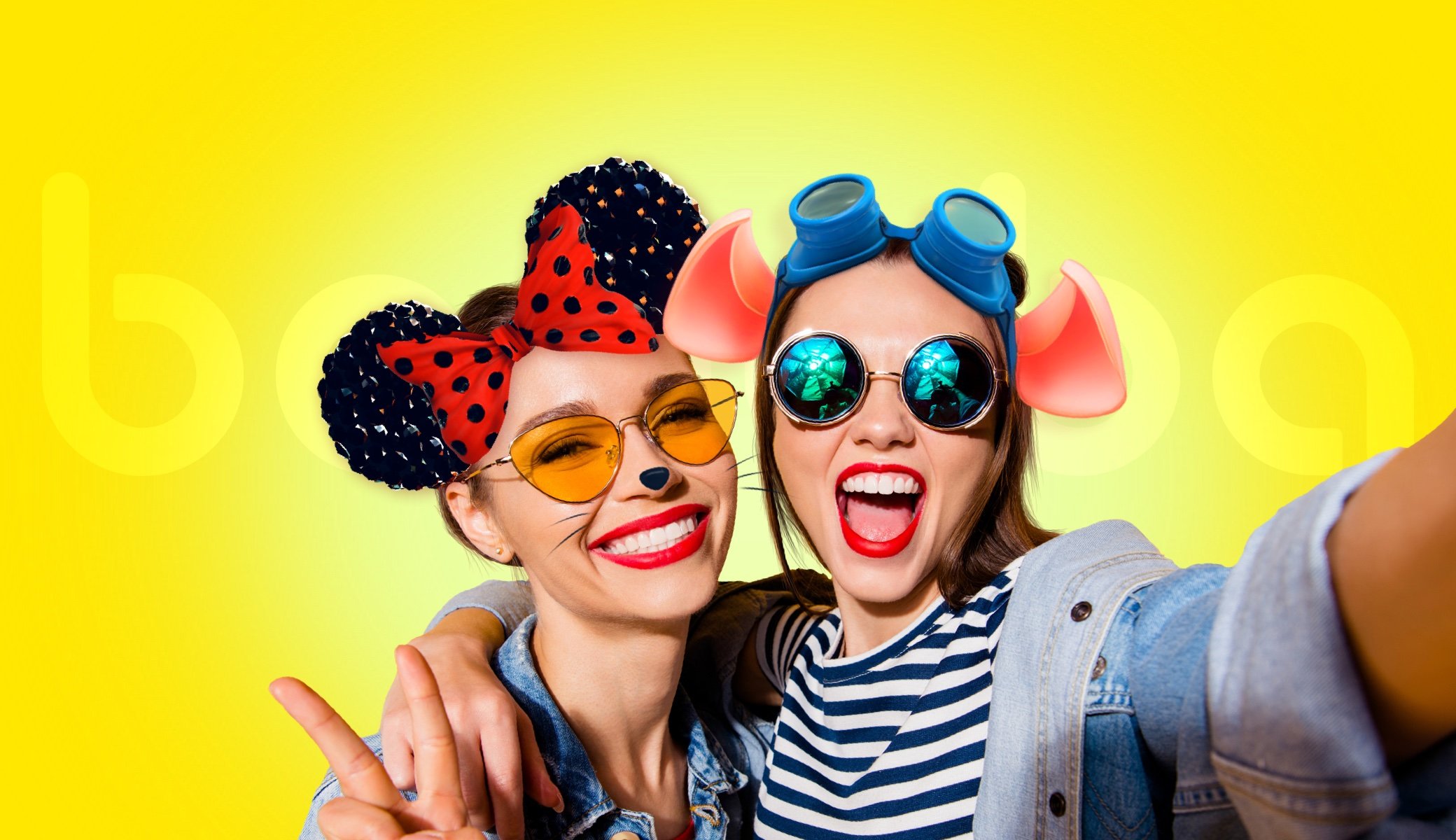

 AR SDK feature demo: 3D AR stickers
AR SDK feature demo: 3D AR stickers
 AR SDK: Facial sticker example
AR SDK: Facial sticker example AR SDK: Video face filter example
AR SDK: Video face filter example AR Stickers and filters | Banuba Face AR SDK
AR Stickers and filters | Banuba Face AR SDK